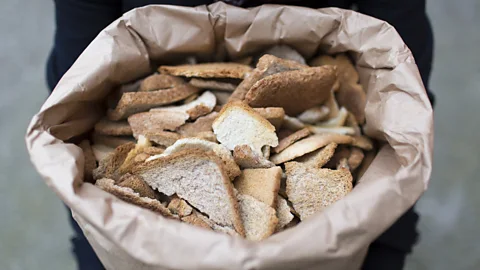Brewed from old bread crusts, the world's oldest beer recipe is experiencing a revival
 Tom Moggach
Tom MoggachAn ancient recipe for Mesopotamian beer has survived the millennia to find new life as a modern drink, with a lower carbon footprint than many of its rivals thanks to its use of old bread crusts.
When people first sipped on a frothy – likely warm, and oddly thick – beer, the world looked different from today. The people who made it lived in Mesopotamia, in what is now southern Iraq. They were Sumerians, the earliest known civilisation in the region, who thrived in ancient cities around 4,000 to 6,000 years ago.
An ancient recipe discovered etched into a clay tablet is written as a poem to Ninkasi, the goddess of beer. "Ninkasi, it is you who handle [the] dough with a big shovel, mixing, in a pit, the beerbread with sweet aromatics," it reads. "It is you who bake the beerbread in the big oven, and put in order the piles of hulled grain." The poem reveals that the beer they were drinking was made not only from the usual grains, yeasts and water – but also from bread.
The Sumerians loved it – the pictograph for beer is among the most commonly used in Sumerian written language. And unlike most beer made today, it uses "beer bread", a twice-baked barley bread, to provide some of the sugars needed to get the brewing process started.
Millennia later, in 2016, the founders of Toast Brewing in London decided to revive this ancient recipe when they were confronted with the huge amounts of food waste created by factories and supermarkets. Tristram Stuart is an environmental campaigner at the non-profit , and Louisa Ziane is a sustainability expert at consultancy The Carbon Trust. They decided to make beer from wasted bread after stumbling upon the possibilities presented by the humble loaf.
